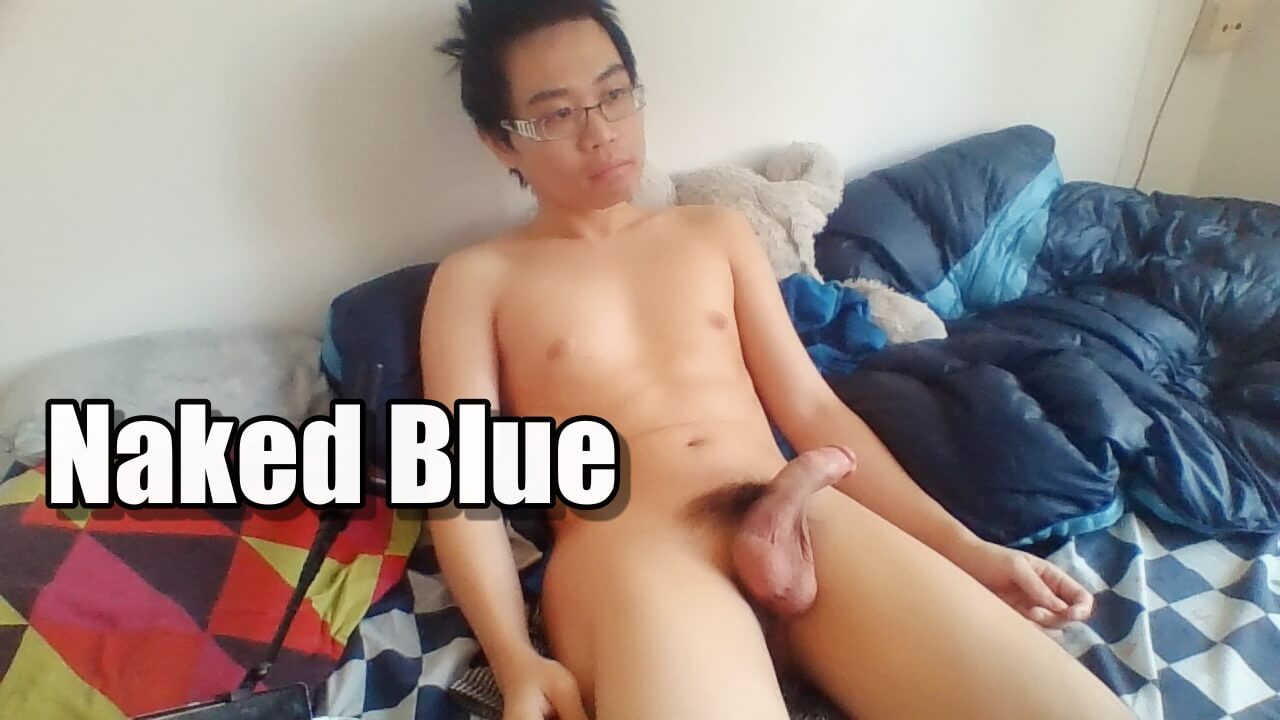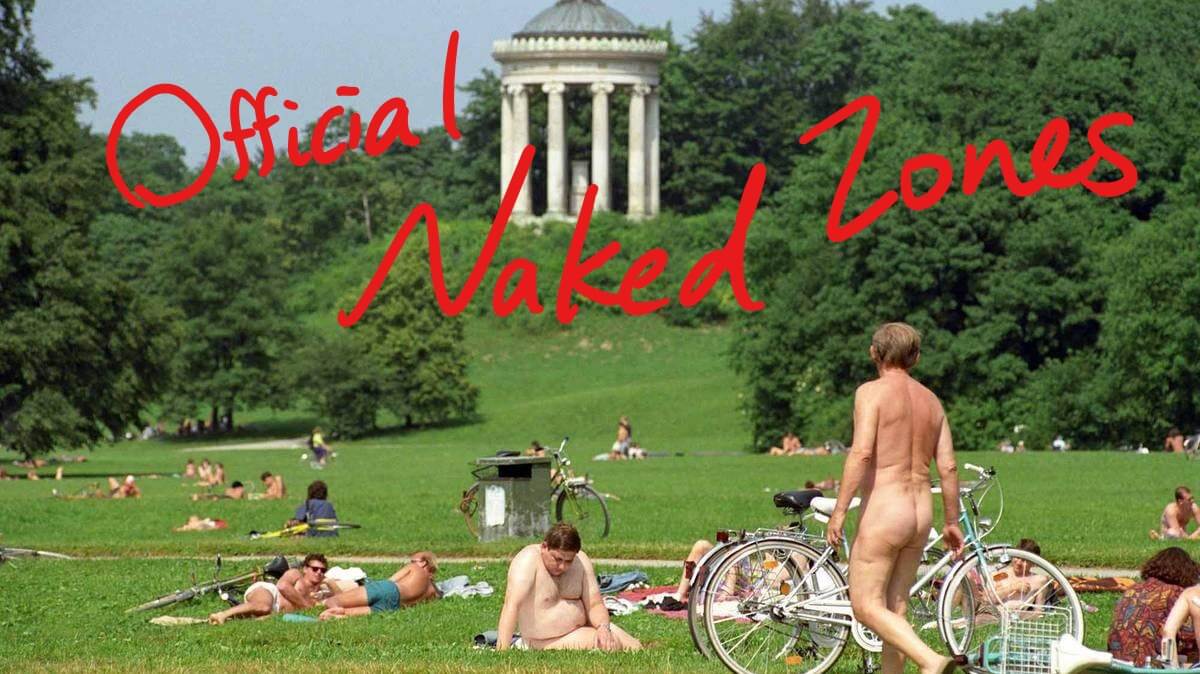Something stated beforehand :
If you are interested in learning the history, origin and more details about this wonderful Qigong workout, you could read this article from Wiki.
- First, except the first posture/act, all the others need to be performed slightly leaning forward, resulting toes grabbing the ground. (Exert force on toes)
- Second, one needs to really exert force. For example, when it’s said “push the imaginary heavy balls above your head”, one needs to really push it. One should feel tensions in the targeted muscles not just raise the arms high and do nothing.
- Third, one has to stretch each finger to the fullest as if someone is pulling them away from your body and open as wide as you can the distance between the thumb and pinky finger. Doing this will activate hand muscles and in particular the ones in (Fig Hand Muscle). In meridian theory, these also activate acupoints, Hegu and yuji. They are responsible for treating peripheral circulatory failure, easing pain and other lung-related disorders like coughing.
- Fourth, there are 361 known and coded acupoints distributed in 12 primary meridians and 2 vessels in human body. This 12 posture static workout covers the whole body so I won’t go into each of them because there are too many. I only mention the mainly stimulated/activated ones. To know more about this and a complete list of all acupoints and meridians, please look at reference section.
- Fifth, make sure your tongue is touching the back of your upper teeth.
- Sixth, there are many version of Yijinjing and all have their advantages and disadvantages. I’ll share the ones I know because we all are different. One may find a particular version more suitable and effective than others.
- Seventh, the reason we need to exert force downwards on toes like grabbing the ground while doing the acts/postures is the following. When doing this, the boxed muscles are activated.(see Fig.Feet) If one leans forward more, the more muscles are activated. By moving, exercising, stretching feet, one stimulates the feet meridians and reflexology areas. (See Fig. Feet Meridians and Fig. Feet Reflexology)
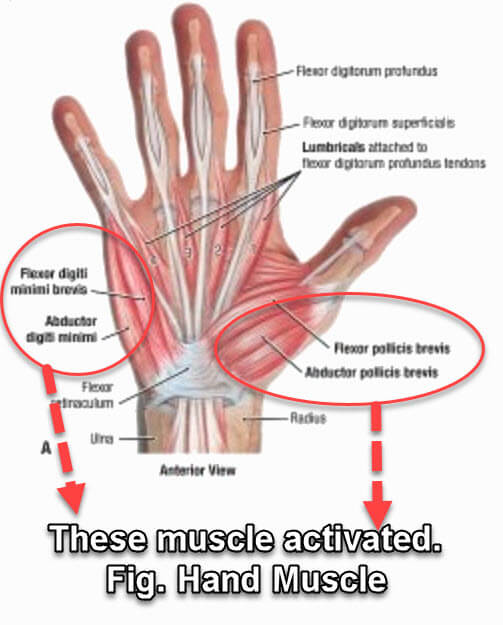
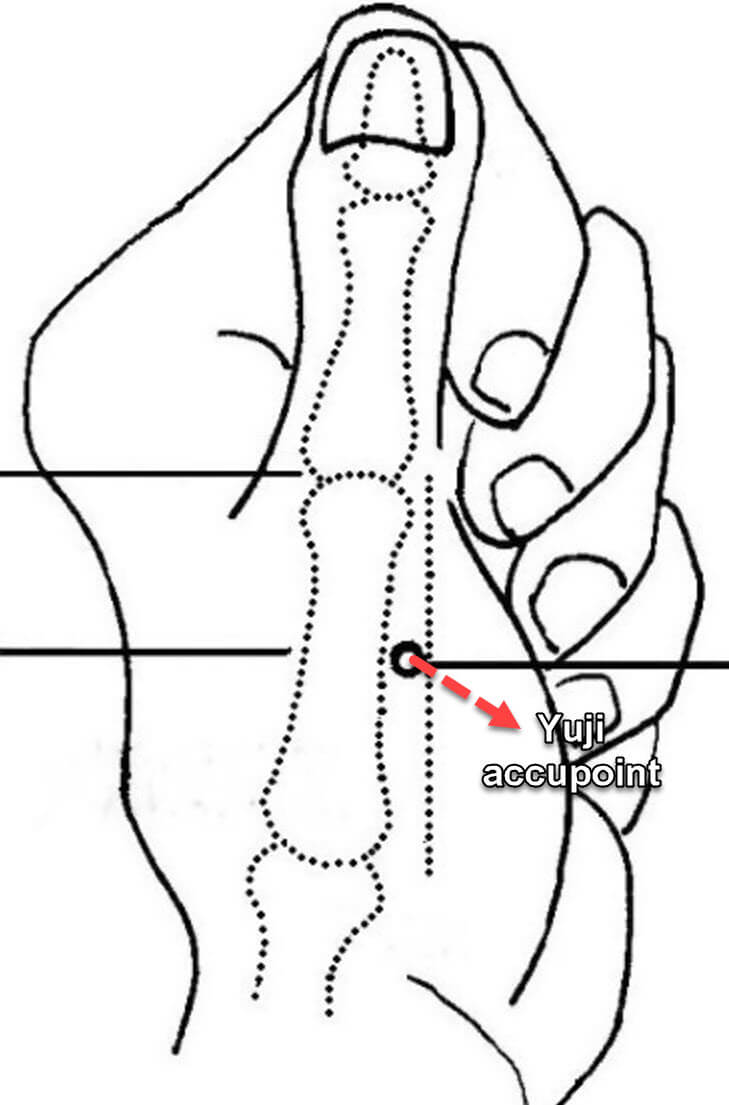
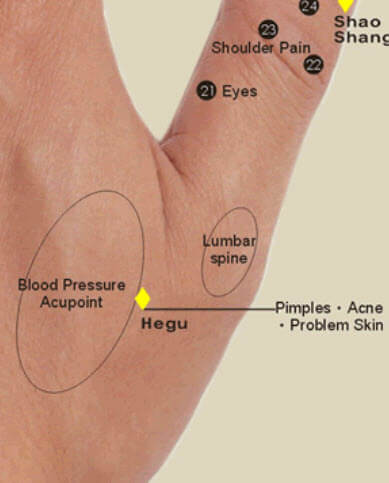
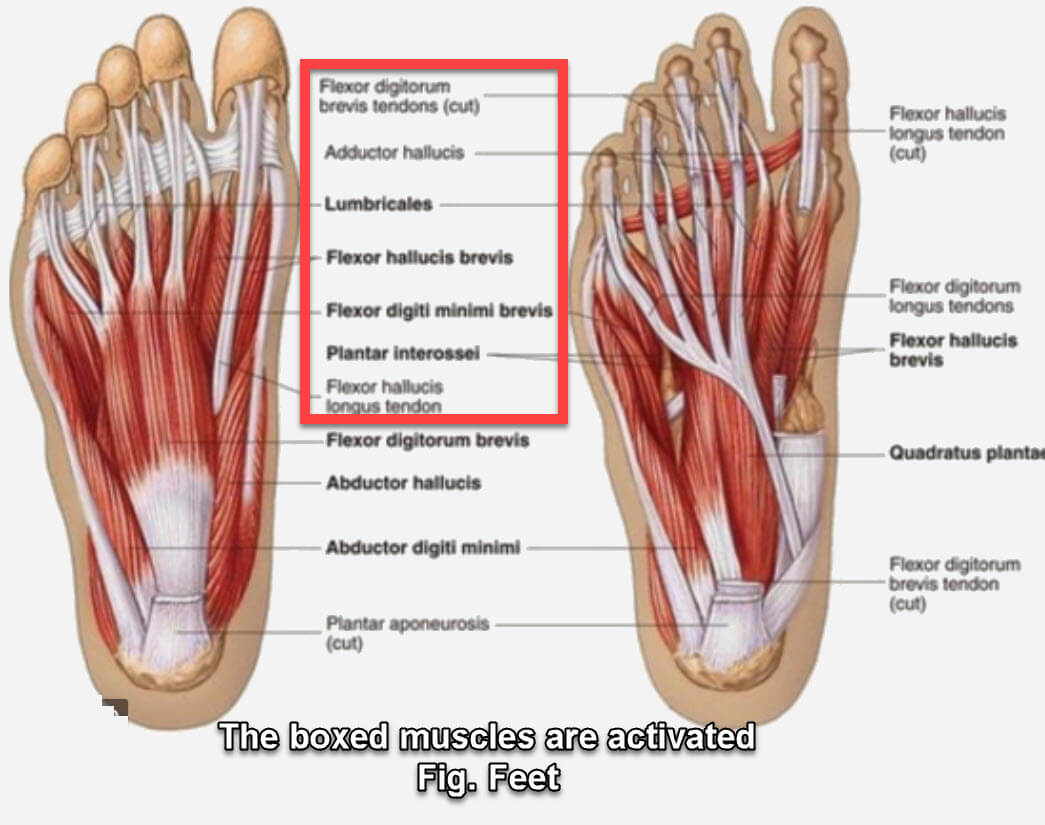
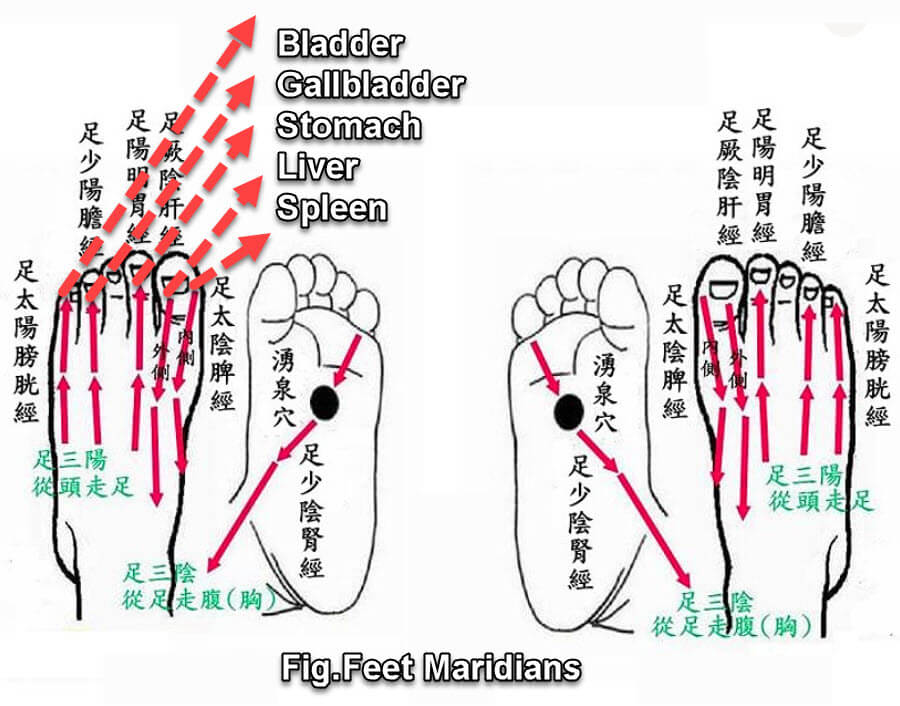
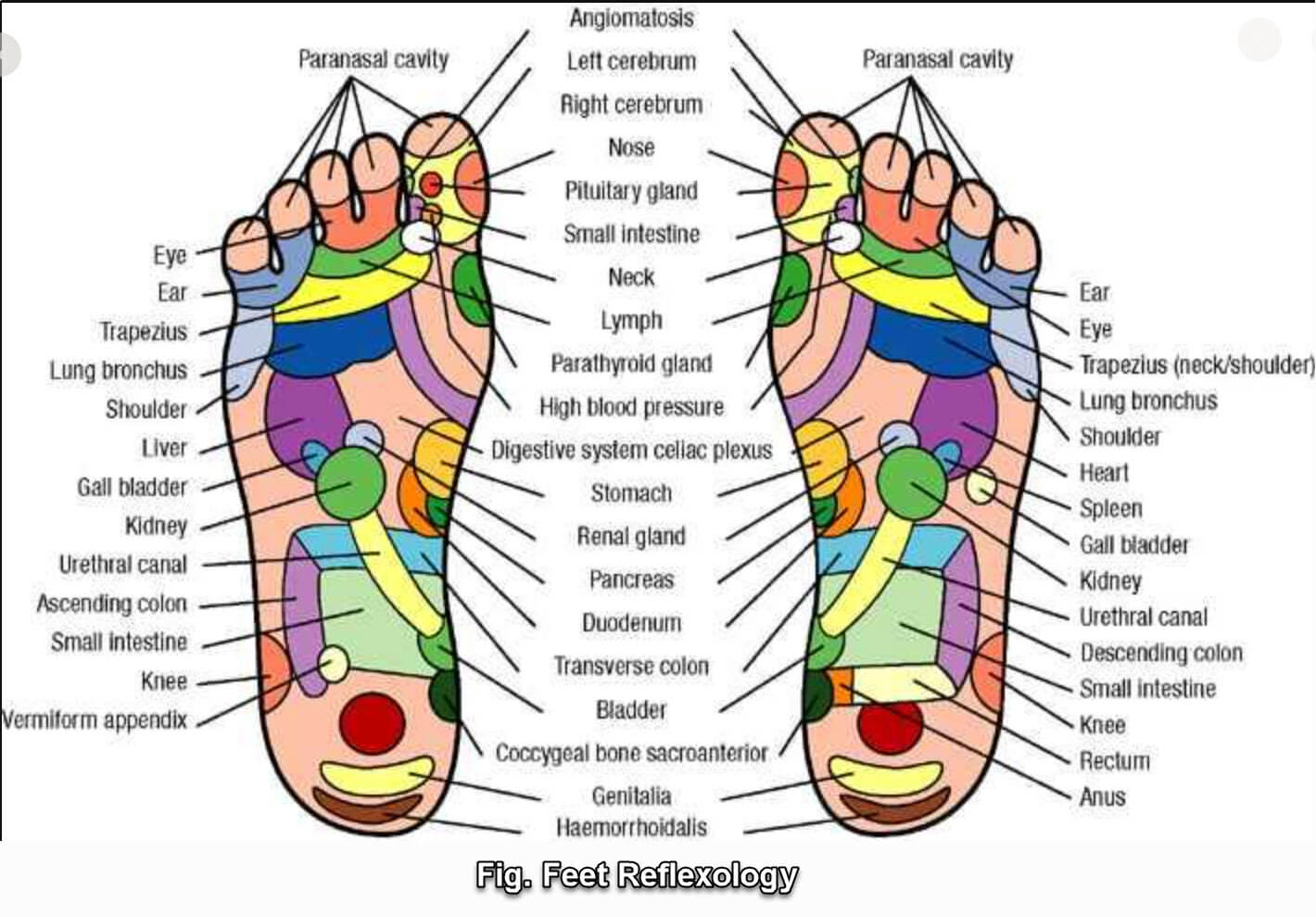
Previous
Next
Video Demo:
https://nakedwill.com/wp-content/uploads/2021/Yijinjing%20act1%20to%20act%2012.mp4
Act 1 to act 4
Act 4 to act 8
Act 8 to act 12
Subscribe to my mail list
Act 1 ~ Act 4 demo
Act 1
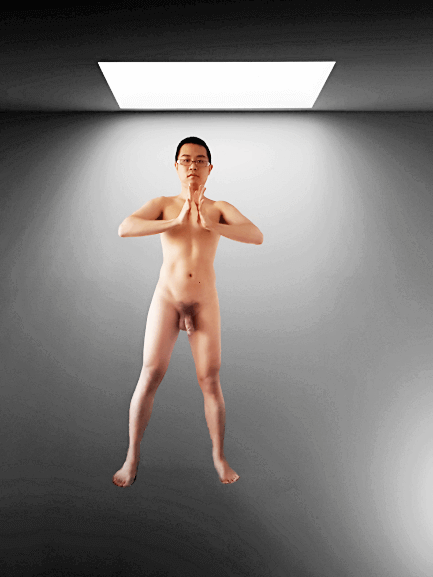
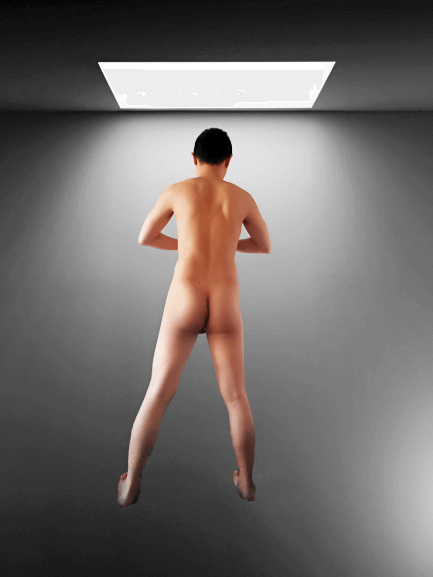
First posture : Targeting lungs.
Hand gesture: Stated above. I’ll call this “default”.
Body gesture: Push your chest out and stand straight (a slightly curved back is acceptable). Squeeze your buttocks and simultaneously contact your pelvic floor muscle just like doing the kegel exercise. (Click here to see my post on Kegel exercise) Slightly lift your tailbone upwards
Act 2
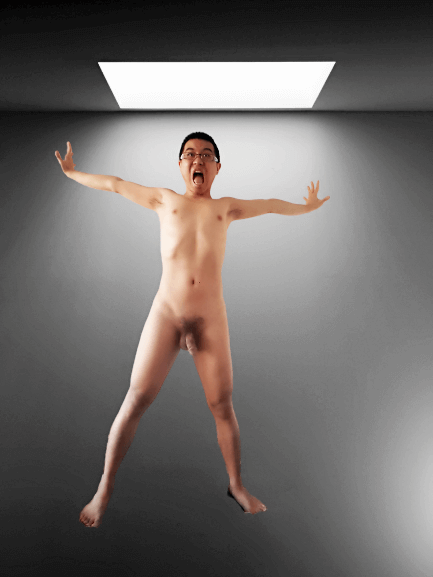
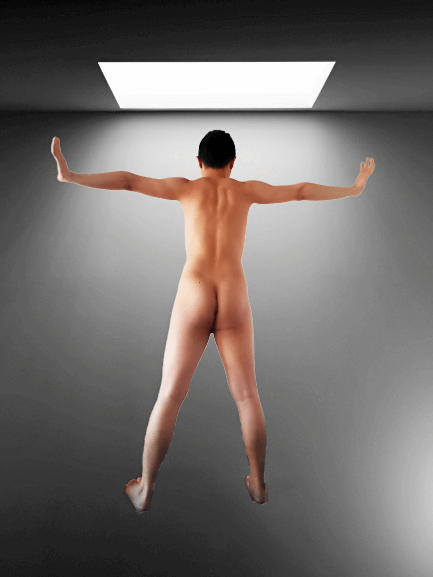
Second posture: Targeting colon and rectum.
Hand gesture: Same as above
Body gesture:
- Open your arms as far as you can and slightly lift them upwards. This will activate (shown in Fig. Torso Muscle) Serratus anterior muscle and external oblique abdominis and trigger an involvement in internal obique abdominis.
- Looking from backside, one will see the two scapula (shoulder bone or shoulder blade) get pulled together. Here in the back, latissimus dorsi, trapezius, Rhomboid major and minor are activated, which will improve blood circulation to the heart.
- Look slightly downwards and lift your chest up. This will make abdominal involvement more, pulling the Traverse abdominal muscle and making diaphragm moving up. Because of the engagement of many muscle, one will feel a bit out of breath. Also this will improve cardio-pulmonary function.
- Fingers facing upwards This will impose some pressure on radial artery and ulnar artery, which will improve blood circulation. Also many arm muscles are activated : Extensor digitorum, Extensor Carpi, Extensor retinaculum…etc
- Mouth and eyes open wide This helps open the airway and exercise facial muscles.
Act 3
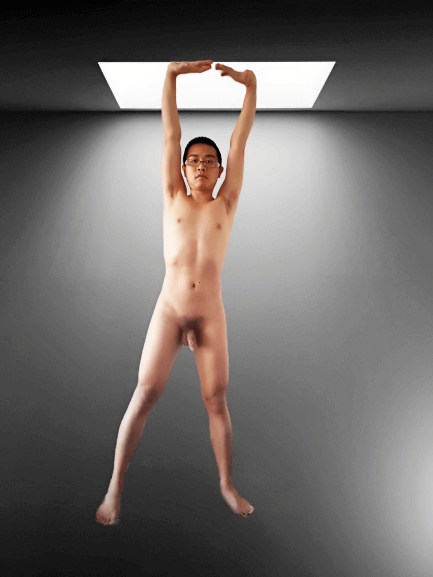

Third posture: Targeting stomach.
Hand gesture: Same as above
Body gesture:
- Lift both your arms up straight to the sky and fingers facing each other. Imagine you’re pushing a huge heavy box to a maximal height you can reach. In our torso, there are many muscle and acupoints (also many main meridians). By stretching arms upwards, you not only activate Deltoid and Brachialis muscle, you also give stimulation to an acupoint in the front torso, especially “burong” point, which can relieve discomforts like stomach bloating and stomach pain, vomiting, loss of appetite, nausea, chronic gastritis, gastric prolapse, peptic ulcer.
- Stand on your toes and slightly leaning forward. This will help improve the sense of balance, activate muscle and tendon in ankles. Human feet are “in charge” of human body from meridian theory and reflexology perspective, meaning activating or stimulating certain part of feet can alleviate pain and discomfort in different parts of the body. In this position, the circled acupoints are activated, which correspond in ascending order to stomach, gallbladder, liver, liver and spleen.
- Toes exert force downwards like grabbing the ground.
Act 4
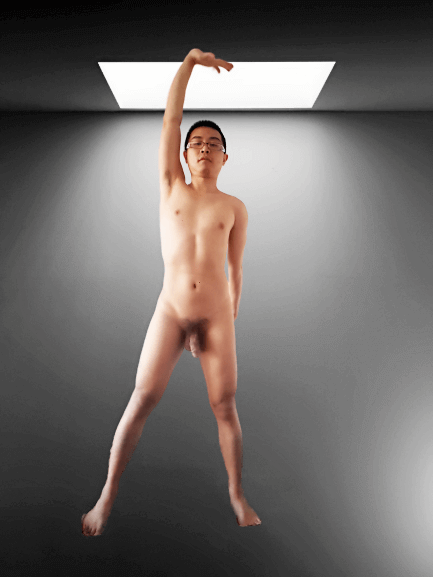

Fourth posture: Targeting spleen.
Hand gesture: Same as above
Body gesture: Remember to switch sides
- Lift one arm straight up to the sky (the same as the first posture) while push the other arm down. (Imagine you are being squeezed by two huge heavy plates and you try your best to push the plates out.)
This position not only engage in the same muscles, acupoints as 3rd posture, but also back muscles like Infraspinatus, Teres minor and major, and Rhamboid major and minor.
- Looking upwards (eyeball movement) while head keeps low.
- Toes exert force downwards like grabbing the ground.
Act 5 ~ Act 8 demo
Act 5
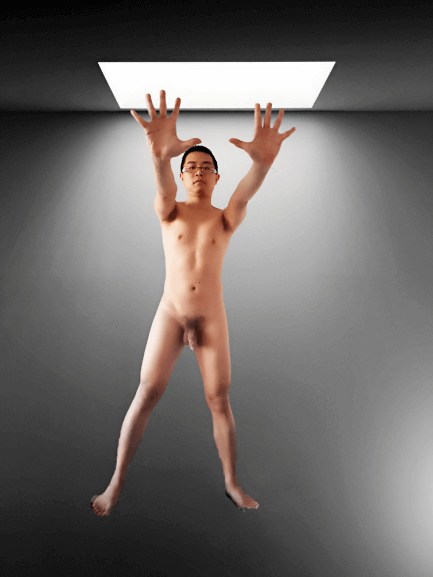

Fifth posture: Targeting heart.
Hand gesture: Same as above
Body gesture:
- Push both arms out (Like pushing away your cheating ex who is running towards you). Bring your chest forward and do not curve your back.
- Bring both hands to your chest. (Like you find out the cheating is just a prank, you wanna bring him/her close to you. Remember you have to pull him/her close against his/her resistance.)
This will activate your triceps, biceps and acupoints in Pericardium Meridian and Lung Meridian. In particular, Chize (which literally means “Cubit Marsh” Quze( which literally means “Marsh at the Crook”) acupoints. - Repeat the first 2 points at least 7 times
- Toes exert force downwards like grabbing the ground.
Act 6
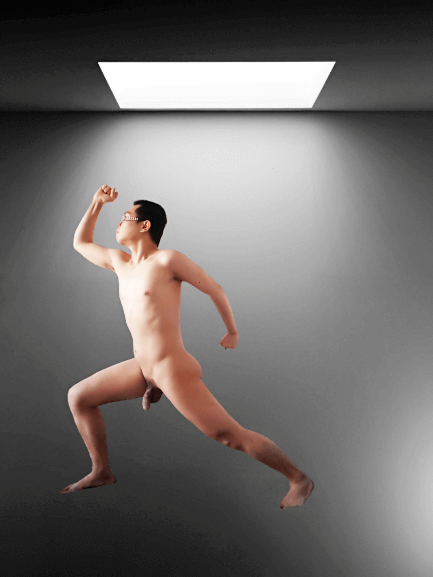
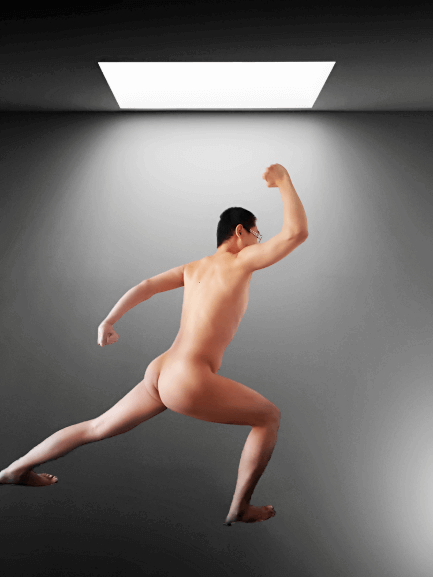
Sixth posture: Targeting small intestine.
Hand gesture: Fists
Body gesture:
- It’s like doing good old Lunges with the leg in the back straight (exert force on it to make it straight). One should feel tensions both in both legs. It activated the muscles in Fig. Lunge Muscle, but the main activated muscles are those in Fig. Lunge Main Muscle. In Meridian theory, the main activated ones (you should feel soreness) are Yingu (Yin Valley) in kidney meridian, Weizhong (Middle of the Crease) and Weiyang (Lateral End of the Crease ) in bladder Meridian.
- Arms in a position like you’re running but one should exert force on opening/spreading them wide
- Turning pelvic to the opposite direction of the leg in the front. This is to engage the lower back muscle.
- Toes exert force downwards like grabbing the ground.
Act 7
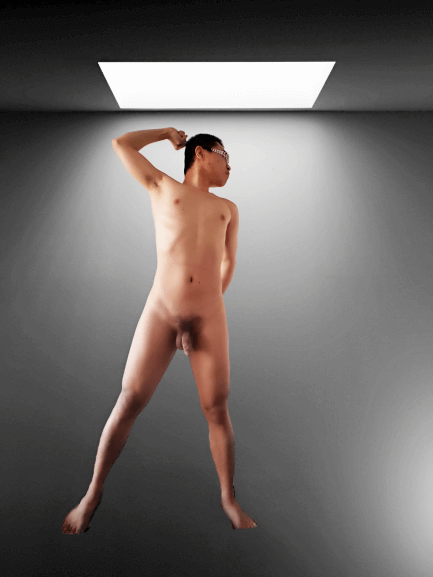
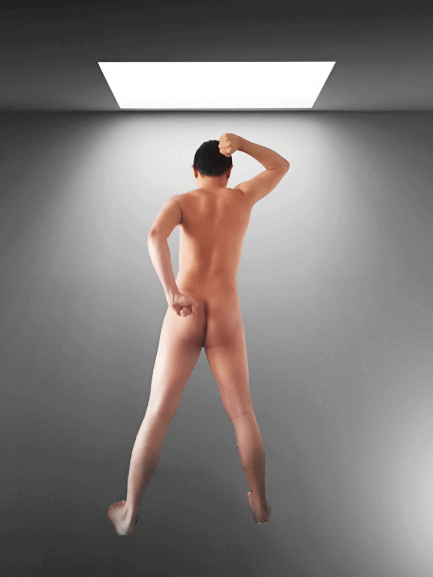
Seventh posture: Targeting bladder.
Hand gesture: fist
Body gesture:
- It’s like you hold a towel with one hand on each end. Again, spread them to the maximum, meaning moving both of your shoulders towards your back. This will activate 17 different muscles in our upper back!!!! Super effective.
- One could try making the two fists touch while in the posture of the above. This will not only work on your muscle but also increase flexibility. Turn your head to the opposition direction from the arms that’s up. Turn your neck hard!!!
- Toes exert force downwards like grabbing the ground.
Act 8
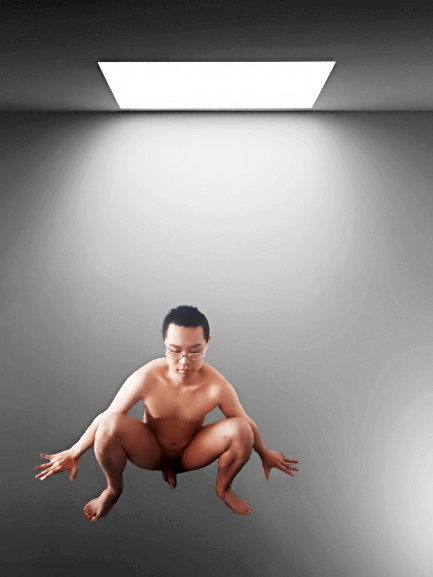

Eighth posture: Targeting kidney
Hand gesture: default
Body gesture: Looking down (eyeball movement) as far as you can like you can see your own mouth. With legs a bit wider than shoulder width(two soles parallel to each other), squatting down like you’re doing number 2 in a forest. If you have hard time doing this, you can shorten the distance between two feet. Arms straight with finger pointing outwards. Exert force on your arms like pushing away yourself from the desk. Toes exert force downwards like grabbing the ground.
Act 9 ~ Act 12 demo
Act 9
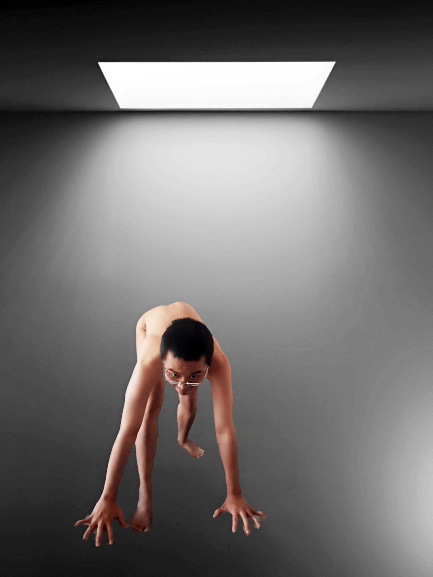
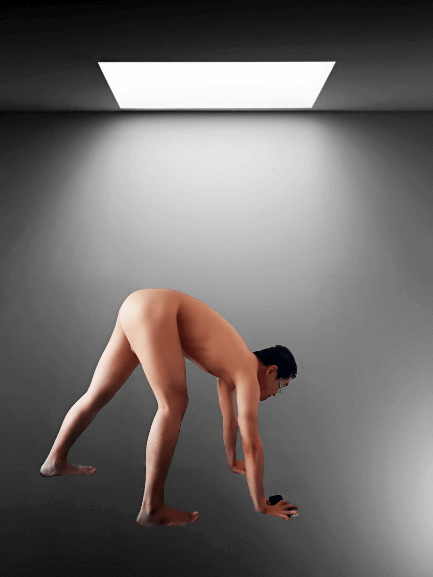

Ninth posture: Targeting hear (Pericardium meridian not hear meridian)
Hand gesture: default (if too exhausted, relax)
Body gesture: Stand straight with legs shoulder width apart. Turn yourself to the right/left to the maximum till you can’t turn further anymore. This can serve as a massage of tendons on your knees. Apart from tension and soreness on your lower back and waist, you should feel a bit tense and sore on the knees too. Toes exert force downwards like grabbing the ground.
Act 10
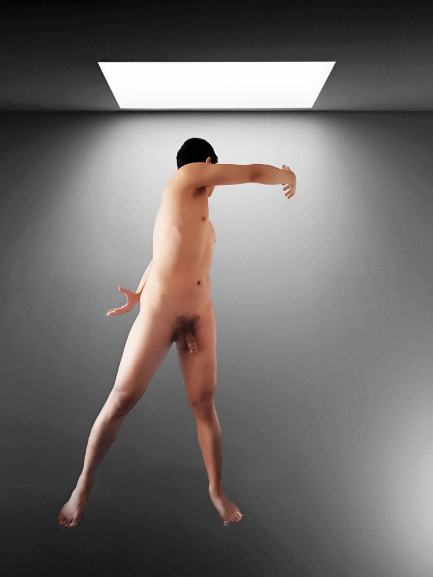

Tenth posture: Targeting Triple burner meridian.
Hand gesture: Bend your first joint of your hands and use only the first joint of your hands to grab the floor as hard as you can.
Body gesture: Imagine you are a tiger and are about to jump on your prey. Curve back like an angry cat. However keep you lower back straight like a table where one could put a cup of coffee on it. You should feel tension and soreness in your groin area. It mainly activates Qichong (Qi Surge) in stomach meridian and Jimen(Separation Gate) in spleen meridian.
Act 11
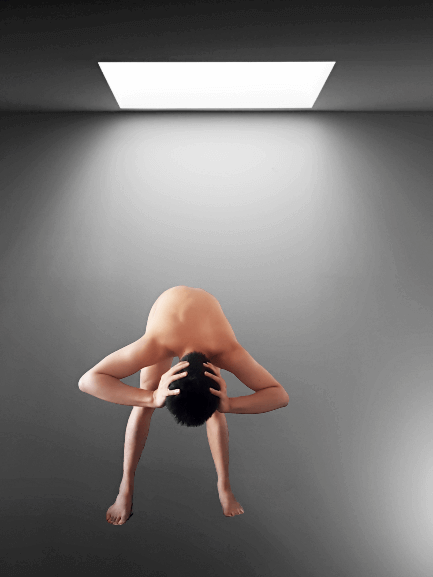
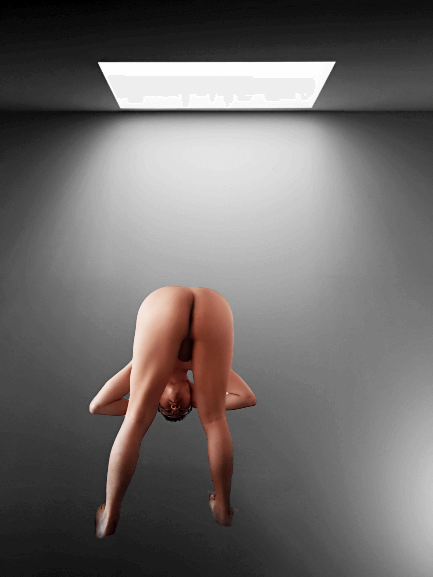
Second posture: Targeting Gallbladder.
Hand gesture:
Body gesture: Put you hand on your ears and fingers on your occipital bone (the back of your head) and bend your torso downwards. If you can, put your head in between the legs. Bite your teeth tight.
Act 12
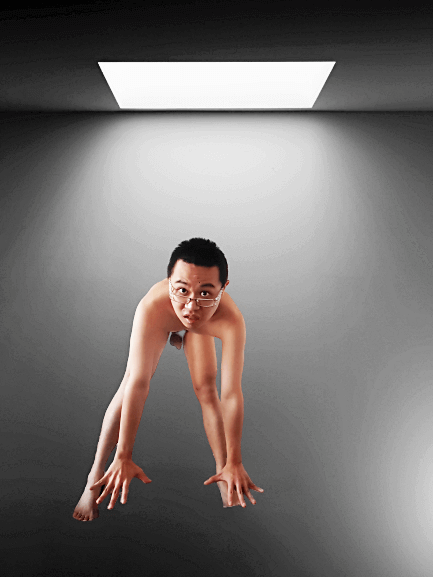

Second posture: Targeting liver.
Hand gesture: Default
Body gesture: Bending over with arms and legs straight and fingers pointing forward. Stand on your toes and drop it back. Remember to lean forward to your max capability. Otherwise, it will harm your brain when dropping back.
My conclusive thoughts
So this whole exercise is a manual from ancient China containing a series of exercises/acts/postures/forms ( I’ll call them “acts”), coordinated with breathing, said to enhance physical health dramatically when practiced consistently. (Really need to be consistent and not give up) In Chinese yi means “change”, jin means “tendons and sinews”, while jing means “methods”. While some consider these exercises as a form of Qigong, it is a relatively intense form of exercise that aims at strengthening the muscles and tendons, so promoting strength and flexibility, speed and stamina, balance and coordination of the body. Because of its long history, there are many versions out there. It’s hard to know what the original text was.
These acts are super intense. If one really follow the instructions and do it to the fullest, it’s really strenuous and exhausting. Each act should be maintained for 10 minutes or longer. I, myself can’t even hold some of the acts a minute long !!!!
This version was originally broadcasted nation-wide on TV by a Qigong master and a medical doctor who also specialize acupuncture and traditional Chinese medicine. They also gave a lot of speech. I benefited from it a lot so I decided to share it with people that don’t have access to it. I’ll share some other versions later. Hope you like it. Stay healthy and stay naked
Some books on martial arts
I was trying to find some nice book/pamphlets on Yijinjing, but most good ones (well-organized and detailed on how to practice, what to expect and cautions) are in Chinese or Japanese. So instead of focusing on this particular form/style, I reoriented my search on general martial arts, their histories, physiological, physical and medical perspectives.
- The Anatomy of Martial Arts: An Illustrated Guide to the Muscles Used for Each Strike, Kick, and Throw
This is a very basic and a bit amateur. It may not be sufficient for experienced people in martial arts. The book may be useful to beginning martial artists in figuring out how to correctly execute many of the moves basic to martial arts– but be aware that full instructions for these moves are not included. The book also touches on incalculable and subtle damage one can inflict on one’s body through rigorous martial arts practice so one good use of this book may be found in it allowing one to be able to communicate the names and some idea of the relationships of injured muscles to one’s physical therapist when needed. The inclusion of “key exercises” for strengthening the muscles necessary for each move may also be of help to the beginner working to increase strength and flexibility. However, some exercises by themselves aren’t terribly useful or instructive — what would be better is a routine or a regiment for different levels of martial artists. Also, different martial arts emphasize different parts of the body as well as different mentalities.
It details takedowns, strikes and defenses in martial arts from Kendo and Karate to Jiujitsu and Judo with this illustrated guide to the muscles and anatomy behind each movement.
With detailed anatomical drawings, this book precisely illustrates the inner workings of your body during key martial arts moves. Its color drawings, helpful photos and clear text make it easy to identify the specific muscles you need to train for maximum speed, power and accuracy. More than just an anatomy book, each section is accompanied by exercises and stretches to strengthen muscles, prevent injury and improve form.
- Zen in the Martial Arts
This book illustrates many sides of martial art practice. Martial arts are not just sports. It covers how the daily application of Zen principles not only developed his physical expertise but gave him the mental discipline to control his personal problems-self-image, work pressure, competition. Indeed, mastering the spiritual goals in martial arts can dramatically alter the quality of your life-enriching your relationships with people, as well as helping you make use of all your abilities. It really goes inside to peek into training experiences with martial arts legend like Bruce Lee and Ed Parker. Being a book written more than 40 years ago, I wish this book could add or revise life philosophies/ training logics of recent martial artists/actors.
Thank you guys for reading my blog posts. ??? I’m glad if I could offer a sliiiightest help. Let me know what you think about this post~~ and don’t forget to share share share ?
- [Evidence Based Acupuncture Training: Acupuncture in Physiotherapy]
- Overview, history and other reference info about accupuncture
- [On Acupoint Hegu]
- [List of all acupoints]
- [Science on reflexology : American reflexology association]
Nakedwill | Nudity Rocks 👚🚫
Everybody is Beautiful.
If you could, please consider supporting Nakedwill through any of the platforms below. All Platforms are the same. I just want to give y’all the maximal convenience. Choose the one you’re the most familiar with or the one you are supporting other creators on or yourself is on (Remember to send me the links 😊)

